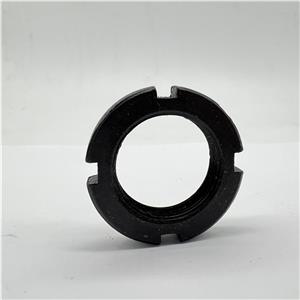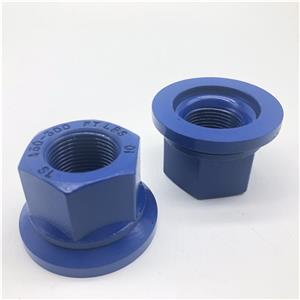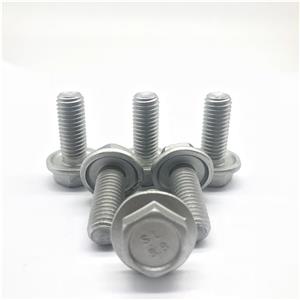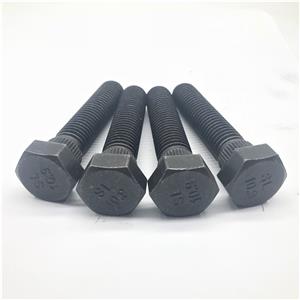Development direction of bolts, screws and automotive bolts Allen Bolt Allen Bolt Socket head cap screw DIN912
Bolts and screws are the most basic mechanical parts and are widely used in various industries such as automobiles, industrial machinery and construction. Unlike welding and riveting, the biggest feature of bolts is that they can be easily removed even after they are fastened, and can be re-tightened and reused.
1 Production process
The material of the bolt is generally coiled wire. After secondary processing such as pickling, lubrication, annealing and drawing, the head and threads of the bolt are subjected to forming processing, heat treatment and surface treatment using a cold forging method. Due to the different types of products, some need to be heat-treated prior to the formation of the threaded part, and some do not require heat treatment or surface treatment. Secondary processing is usually handled by a professional handler, but sometimes it is handled in a bolt making plant.
1.1 Screw head forming
Generally, the process of cold forging the bolt head using a forging machine such as a top boring machine or a jacking machine is referred to as "top boring processing." The so-called cold forging is the processing at room temperature, which is the opposite of the warm processing and hot processing after the billet is heated.
The forging process involves cutting a coiled steel material to a suitable length and forging the material with several forging dies. Forging includes upsetting, deep drawing, reverse extrusion, dressing and other four processes. Forging is the process of squeezing material from one end to expand it to a larger diameter than the original; deep-drawing is the opposite, that is, squeezing the material from one end to shrink it to a smaller diameter than the original; reverse extrusion is From the end face of the material, it is extruded in a forging die that is smaller than the material diameter, and the material is extruded outwards while being perforated; the trimming is the removal of excess thickness with a forging die. Depending on the shape of the processed product, these processes can be used separately or in combination. The more complex the shape of the product, the more the machining process is required and the molding process is performed slowly. However, the ordinary bolts can be formed by only 2 to 5 machining processes.
1.2 Thread forming process
In the thread forming process of the bolt, the thread is cold forged using a roll forming machine, and the method of forming is the same as the method of forming the bolt head.
The thread shape is processed by sandwiching the blanks between two sets of forging dies and turning one of the two forging dies to one side to rotate the blanks and turn into a thread shape by plastic working. The forging die for thread forming is called a "roll forming die."
There are three kinds of roll forming machines: flat die forging die roll forming machines, round die forging die roll forming machines and planetary roll forming machines. The flat die forging forming machine is equipped with two ordinary rolling forming forging dies, one of which is fixed, the other is moved forward and backward, and the blank is rolled and formed. The rotary die forging forming machine rotates two parallel cylindrical rolling forming dies in the same direction and rolls the blank sandwiched between two forging dies. Planetary roll formers are machined by sandwiching blanks between a cylindrical forging die and a fan die, and rolling forming by rotating a cylindrical forging die.
1.3 Heat treatment
Cold forged bolts are generally made of materials that have a hardness suitable for plastic processing. Materials with high carbon content or materials with added alloy elements are hard to process due to their own materials. Therefore, some materials need to be softened by annealing. Most materials do not meet the required strength in the case of cold forging. Heat treatment is performed after cold forging. It can make the bolts have the required strength and mechanical properties. It is the most important process in the bolt production process.
Bolts can be classified into various strength grades according to the use location and use. In order for the formed bolts to have their respective required mechanical properties, heat treatment is required.
1.4 Surface Treatment
Since bolts used in automotive engines often adhere to lubricating oil, they do not rust even without surface treatment. However, this kind of bolt is only a small part. Most of the bolts are used in corrosive environments, so if they are not surface treated, they will quickly rust. If the rusted bolts are placed on it, the bolts will not be able to be opened after corrosion. In severe cases, the bolts will break and cause serious accidents. Therefore, bolts used in a corrosive environment require surface treatment such as plating.
Bolt surface treatment can be roughly divided into two kinds of plating and coating. The most widely used is electroplating, which has the advantages of low cost and good corrosion resistance. In the case where corrosion resistance is required to be higher than plating, an alloy such as galvanized iron and galvanized nickel may be used for plating, or a zinc-aluminum composite film may be applied.
2 Development Trends of Automotive Bolts
In recent years, automakers have demanded lower parts costs, lighter weight, and higher strength. At the same time, in order to cope with environmental issues, CO2 emissions must be reduced. To reduce fuel consumption, body weight must be reduced as much as possible.
In the production cost of bolts, the billet cost accounts for the main part, so the most effective way is to reduce the cost of the material itself. Japanese automakers are investigating the use of cheap materials overseas in order to reduce the cost of supplying materials.
In order to meet the user's requirements, bolt makers have also conducted various studies to reduce the weight of bolts. As measures for reducing the weight of bolts, some use light metals such as aluminum or titanium, and some reduce the bolt size.
Although it is possible to reduce the weight by reducing the size of the bolt, if the size of the bolt of the same strength level is reduced, the tightening force of the bolt will decrease due to the reduction of the bolt sectional area. Therefore, in order to ensure the same degree of firmness and reduce the bolt size, it is necessary to increase the strength of the bolt.
In the current public standards such as JIS and automobile manufacturers' own standards, only bolts with a strength rating of 12.9 or less are specified. For ordinary quenched and tempered bolts, when the strength level exceeds 12.9, the delayed fracture characteristics will deteriorate at once. In places where high-strength bolts of 10.9 or 12.9 have been used, if you want to reduce the size to achieve lightweight, you must use bolts with a strength rating of more than 12.9 and use some method to improve the delayed fracture characteristics.
The quenched and tempered bolts achieve high strength, and some improve delayed fracture properties by adding alloying elements. Although the addition of alloying elements can improve the delayed fracture characteristics somewhat, the increase in cost due to the high price of alloying elements is unavoidable.
Another measure is to use non-tempered bolts. Non-quenched and tempered bolts do not need to be tempered (heat treated) after forming, and the strength is mainly ensured by the work hardening of the material. The metal structure of non-modified bolts is completely different from that of quenched and tempered bolts. It has strong anti-delay fracture properties. Non-tempered bolts use a material with a higher carbon content than the quenched bolts. Through controlled cooling and heat treatment at the billet stage, high reductions in area are obtained. After the work hardening by wire drawing, the bolts are further formed in the forming stage. Work hardening ensures bolt strength. Although ordinary bolts are not tempered after forming, they must be blued in order to eliminate the strain inside the bolts by cold forging. The disadvantage is that the hardness of the material is higher than that of the tempered type and it is very difficult to form.
At present, the strength of non-tempered bolts used in engines is 1600 MPa, and the strength of non-tempered bolts used in bodywork has reached 1400 MPa. It can be expected that the demand for such high-strength bolts will be further expanded in the future.




